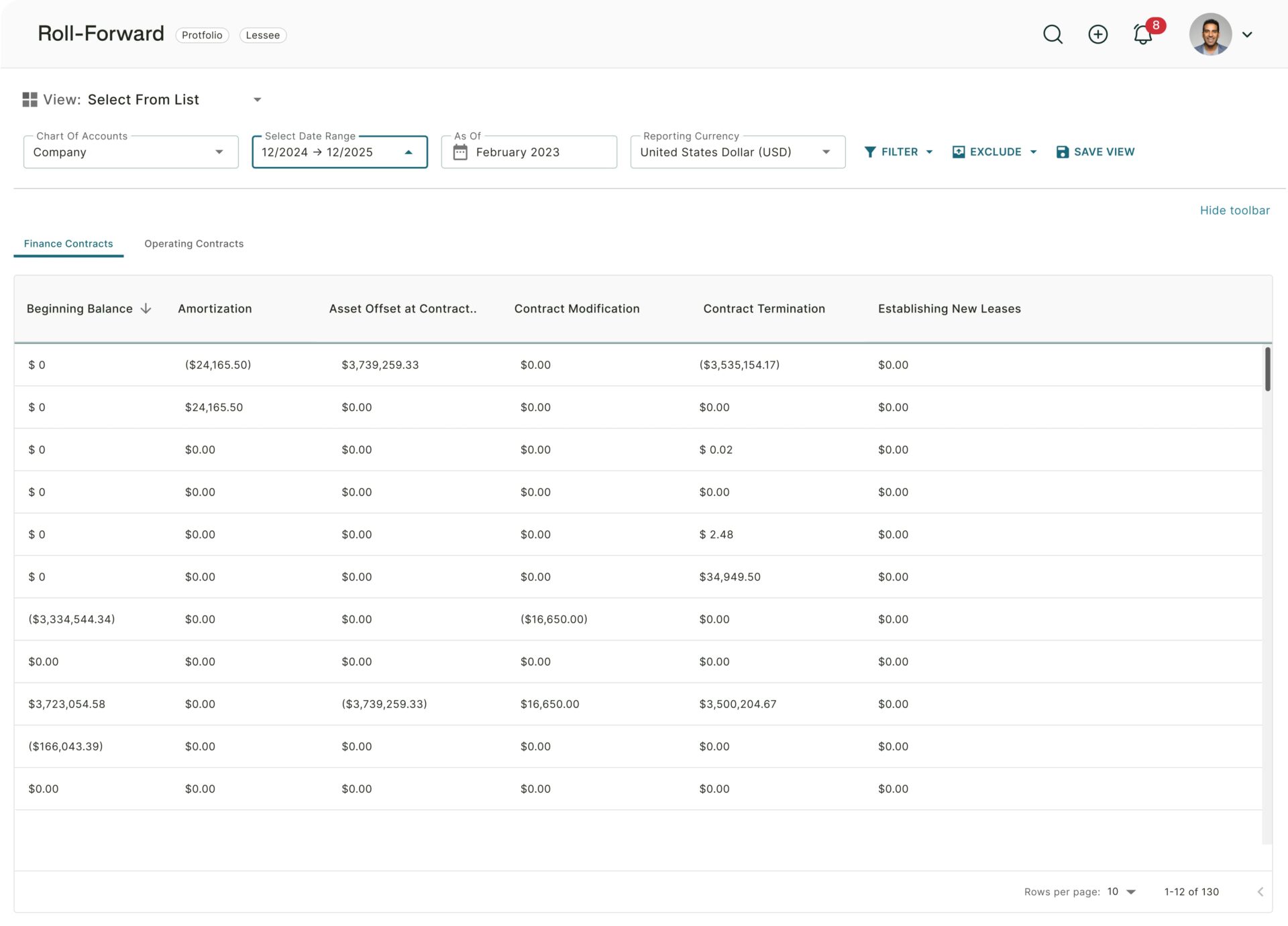If your team manages lease accounting for multiple clients, you know the drill: dozens of spreadsheets, hundreds of tabs, and manual inputs scattered across folders and desktops.
Excel wasn’t built for this complexity. Even with add-ons, spreadsheets introduce risk, drain time, and make it nearly impossible to scale your services. It’s time to rethink your workflow.
The hidden cost of spreadsheets
Managing lease accounting across multiple clients isn’t just about speed. It’s about delivering standardized, compliant, and scalable services – both efficiently and reliably.
- Time-consuming processes. Every new lease requires manually setting up another file, applying formulas, and double-checking classifications. Multiply that across clients with inconsistent templates, and your team is spending valuable hours on tasks that could be automated.
- Increased risk of errors. While spreadsheets make it easy to model individual leases, they make it difficult to enforce consistency across engagements. A single formula override or classification misstep can cascade into compliance issues and audit delays.
- Audit headaches. During audits, spreadsheets reveal their weakest link: traceability. Review cycles stretch out as teams hunt for source data and reconcile versions.
- Limited growth. With spreadsheets, more clients always means more complexity. Workload increases linearly with your client base – and it doesn’t need to.
Where Excel-based solutions fall short
Some firms use Excel-based solutions, such as downloadable templates or macros offered by CPA firms and consultancies. These tools enhance spreadsheet workflows by providing pre-built formulas and templates to:
- Calculate lease classifications under ASC 842 and IFRS 16
- Set up amortization schedules for ROU assets and liabilities
- Generate basic journal entries and disclosure templates
However, these Excel-based solutions don’t solve the core problem: spreadsheets weren’t built to manage multi-client lease accounting at scale. For example, they can’t:
- Automate data extraction directly from lease agreements
- Enforce built-in compliance logic for ASC 842 and IFRS 16 across engagements
- Generate fully compliant disclosures and roll-forward reports without manual intervention
- Support role-based access, controls, and audit logs across multiple clients
As a result, teams continue to spend hundreds of hours stitching together data, reconciling inconsistencies, and managing risk manually.
What managed services teams actually need
Scaling lease accounting as a managed service requires more than incremental efficiency gains. It calls for:
- A centralized lease repository. You need one platform to manage leases across all clients – ensuring standardized processes, audit-ready data, and system-enforced compliance.
- Automated lease abstraction. Extract key lease terms like commencement dates, payments, and CPI escalators directly from documents in seconds.
- Built-in compliance logic. Automatically run classification tests, calculate ROU assets and liabilities, and generate disclosures, aligned with ASC 842 and IFRS 16.
- Scalable controls and access. Assign role-based permissions and maintain audit logs across clients to support team collaboration and regulatory requirements.
- Standardized, click-to-generate reporting. Produce compliant reports across clients without duplicating templates or reinventing workflows for each engagement.
Save hours, reduce risk, and scale with confidence
Managed services firms adopting centralized lease accounting platforms report:
- Faster close cycles across multiple clients
- Fewer manual errors in classification and calculations
- Standardized, audit-ready outputs that build client trust
For example, Claroty achieved over 90% time savings after automating lease accounting workflows.
Spreadsheets got you here. But scaling your managed services practice under ASC 842 and IFRS 16 demands a solution built for compliance, automation, and growth.
Explore how modern lease accounting platforms can future-proof your workflows. Book a demo today.





